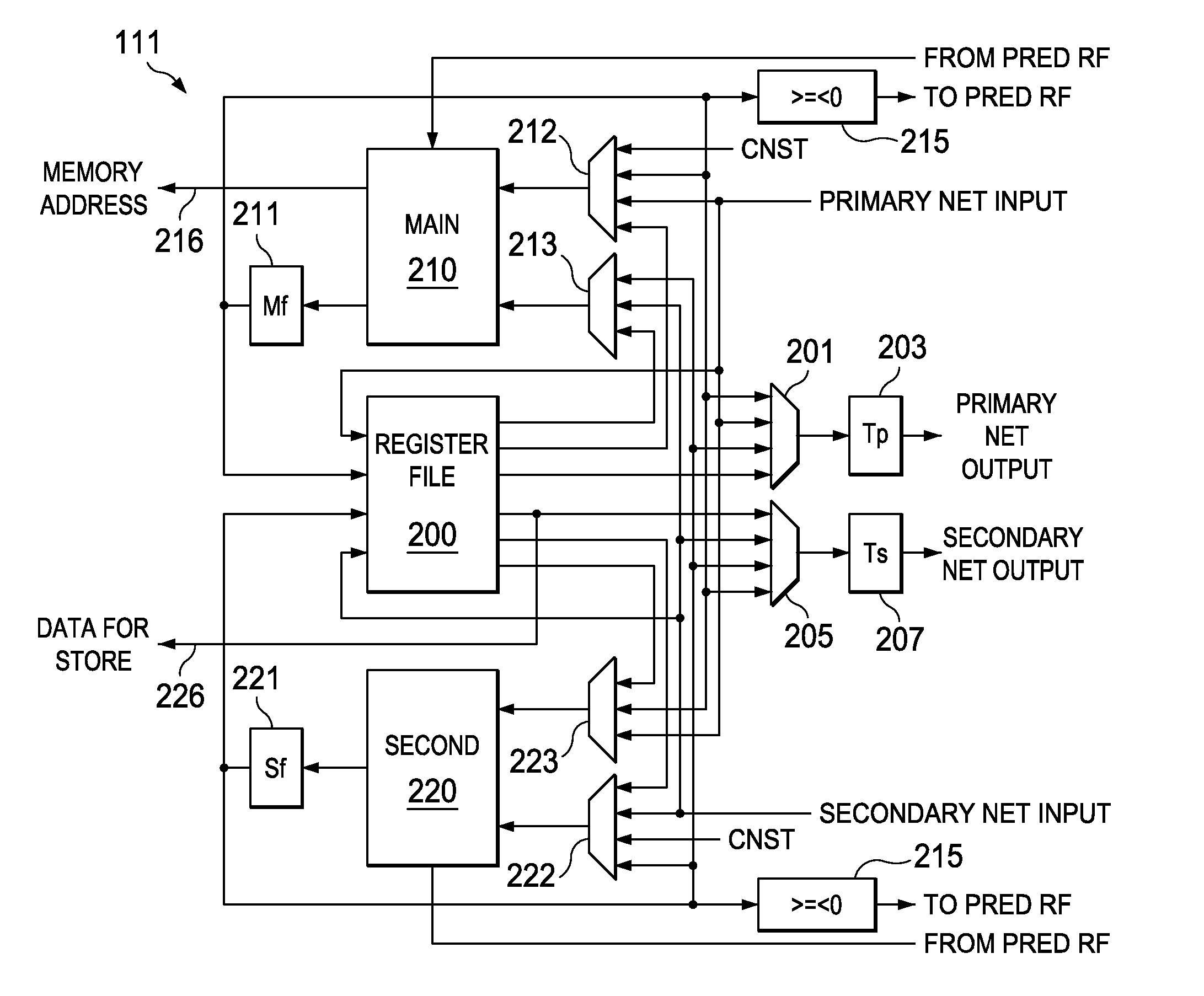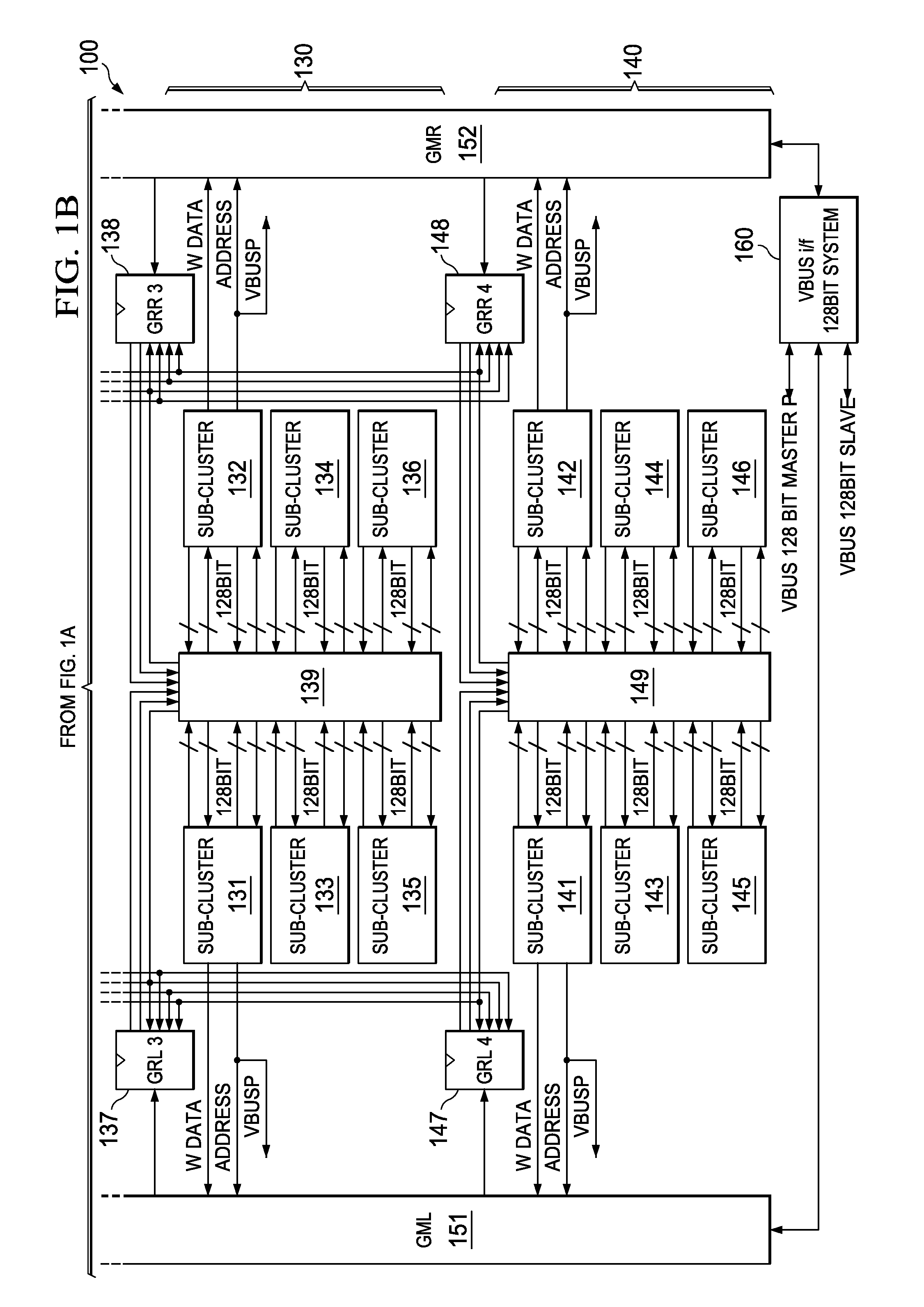Register File Bypass With Optional Results Storage and Separate Predication Register File in a VLIW Processor
a register file and results storage technology, applied in the field of data processing devices, can solve the problems of reducing the speed of the processor, requiring a new level of complexity and cost, and wasting a large amount of detection and forwarding logic required by register file bypassing, so as to reduce the amount of hardware needed and power
- Summary
- Abstract
- Description
- Claims
- Application Information
AI Technical Summary
Benefits of technology
Problems solved by technology
Method used
Image
Examples
first embodiment
[0069] this invention employs the instruction kill bit as described above in conjunction with FIG. 5. Detection of the need for register file bypassing occurs as in the prior art as described in conjunction with FIG. 9. During the decode group 420 any register file conflicts are detected. This detection operates in conjunction with knowledge of the instruction latency of the instruction generating the operand used by the later instruction. Detection for register file bypassing occurs only if the generating instruction produces the operand during the pipeline phase immediately before use in the execute phase E1 of the consuming instruction. If the generating instruction precedes the consuming instruction by enough to permit the operand to be written to and read from the register file, then no register bypass is needed. If an instruction writes to a register within the register file taking into account the execution latency during a pipeline phase following the execute phase E1431 of ...
second embodiment
[0073] this invention employs explicit register file bypass. In this embodiment the instruction indicates whether register file bypassing is needed to supply an operand to the next instruction. By thus exposing the pipeline, the decision to forward an operand or write to the register file or both is made at statically at compile time. This invention requires a less complex bypass scheme but creates some areas where the program flow cannot be interrupted. The following are examples of required behavior.
Inst 1ADDL10, L12, L11Inst 2ADDL11, L10, L13; L11 needs forwardingInst 3. . .Inst 4. . .Inst 4ADDL11, L12, L14; L11 read from Rf
[0074] Code example 3 is a native instruction sequence. In code example 3 the operation of instructions 3 and 4 does not matter to the register bypass operations. It can be seen that the results of instruction 1 to be stored in register L11 should be forwarded to the input of instruction 2. Instruction 4 can read this data from register L11 because enough time...
PUM
 Login to View More
Login to View More Abstract
Description
Claims
Application Information
 Login to View More
Login to View More - R&D
- Intellectual Property
- Life Sciences
- Materials
- Tech Scout
- Unparalleled Data Quality
- Higher Quality Content
- 60% Fewer Hallucinations
Browse by: Latest US Patents, China's latest patents, Technical Efficacy Thesaurus, Application Domain, Technology Topic, Popular Technical Reports.
© 2025 PatSnap. All rights reserved.Legal|Privacy policy|Modern Slavery Act Transparency Statement|Sitemap|About US| Contact US: help@patsnap.com



